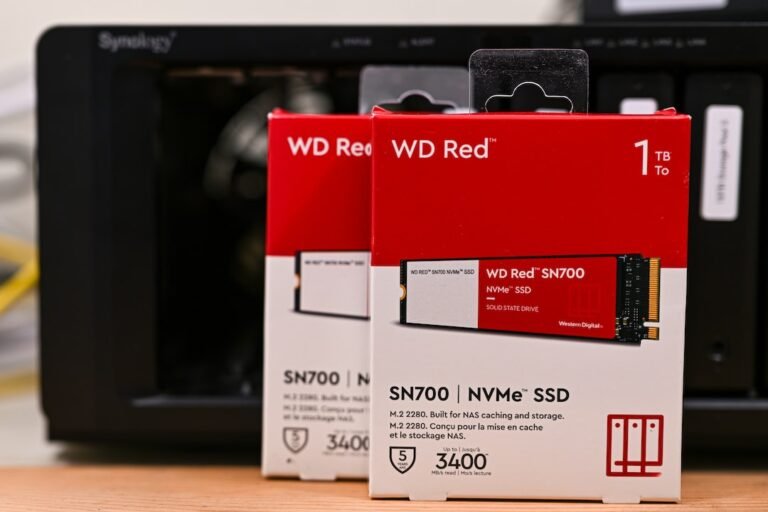Introduction
Are you tired of dealing with slow internet speeds, limited functionality, and security vulnerabilities on your router? Well, there’s a solution that can unlock the full potential of your router and give you more control over your home network. It’s called open-source firmware for routers, and in this article, we’ll explore how it can enhance the performance, security, and features of your router.
So, what exactly is open-source firmware? How can it benefit you? And how do you go about installing it on your router? Let’s dive in and find out.
What is Open Source Firmware for Routers?
When you buy a router from a manufacturer, it usually comes pre-loaded with firmware, which is the software that controls the router’s functionality. Most routers use proprietary firmware developed by the manufacturer, which means you have limited control and customization options.
Open-source firmware, on the other hand, is developed by a community of developers and is freely available for anyone to use, modify, and distribute. This means that users can take advantage of the collective knowledge and expertise of the open-source community to improve their router’s performance and security.
One of the most popular open-source firmware options for routers is OpenWRT, which is based on the Linux operating system. OpenWRT provides a wide range of features and customization options that are not typically available on stock firmware.
Enhancing Performance with Open Source Firmware
One of the main advantages of open-source firmware is the ability to enhance the performance of your router. By using open-source firmware, you can optimize the router’s settings and configurations to ensure maximum speed and stability.
For example, you can adjust the transmit power to optimize the range and coverage of your Wi-Fi signal. You can also enable advanced Quality of Service (QoS) settings to prioritize certain applications or devices, such as online gaming or video streaming, for a smoother and lag-free experience.
Additionally, open-source firmware allows you to take advantage of the latest networking technologies and protocols. For example, you can enable support for IPv6, which offers improved efficiency and a larger address space compared to the older IPv4 protocol.
Strengthening Security with Open Source Firmware
Security is another crucial aspect of your home network, and open-source firmware can help you enhance it. With open-source firmware, you have full visibility into the code that runs on your router, which means you can identify and fix potential vulnerabilities.
The active community of developers behind open-source firmware regularly releases updates and patches to address security issues and improve the overall stability of the firmware. This means that you can benefit from timely updates and security fixes, even for older router models that may no longer receive support from the original manufacturer.
Moreover, open-source firmware often includes additional security features not found on stock firmware. For example, you can enable built-in VPN server support to protect your online privacy and secure your internet connection. You can also take advantage of features like ad-blocking, content filtering, and parental controls to ensure a safer and more secure browsing experience for your family.
Expanding Features and Customization Options
Stock firmware often lacks certain features and customization options, leaving you with a limited set of functionalities. Open-source firmware, on the other hand, offers a vast array of features and customization options that can transform your router into a powerful networking device.
For instance, with open-source firmware, you can install additional software packages to extend the functionality of your router. These packages can range from network monitoring and bandwidth management tools to media servers and VPN clients.
In addition, open-source firmware allows you to configure your router to work with various third-party services and devices. You can integrate your router with smart home devices, create a mesh Wi-Fi system for seamless coverage, and even set up a gaming router with optimized settings for online gaming.
Installing Open Source Firmware on Your Router
Now that you’re convinced of the benefits of open-source firmware, you may be wondering how to get started. The process of installing open-source firmware varies depending on your router model, but here’s a general overview:
Check compatibility: Not all router models are compatible with open-source firmware. Visit the official website of the firmware you choose, such as OpenWRT or DD-WRT, to check if your router model is supported.
Download the firmware: Once you’ve confirmed compatibility, download the appropriate version of the open-source firmware for your router model.
Backup and reset your router: Before installing open-source firmware, it’s essential to back up your router’s current settings and configurations. After that, perform a factory reset to ensure a clean installation.
Flash the firmware: Connect to your router’s web interface and navigate to the firmware upgrade section. Select the downloaded open-source firmware file and proceed with the installation process. Be patient, as this process can take several minutes.
Configure and customize: Once the firmware is successfully installed, you can log in to the router’s web interface and start configuring settings and customizing features according to your preferences.
It’s worth mentioning that installing third-party firmware on your router may void the manufacturer’s warranty. However, many enthusiasts believe that the benefits of open-source firmware outweigh this potential drawback.
Conclusion
Open-source firmware for routers can unlock the full potential of your router, providing you with enhanced performance, strengthened security, and expanded features. By taking advantage of the collective knowledge of the open-source community, you can optimize your router to suit your specific needs and requirements.
Remember to check the compatibility of your router before installing open-source firmware, and always backup your settings and configurations. With open-source firmware, you can unleash a new level of control and customization over your home network, making it a more efficient, secure, and enjoyable experience for all.
FAQ
Here are some frequently asked questions about open-source firmware for routers:
| Question | Answer |
|---|---|
| Can open-source firmware be installed on any router? | Open-source firmware is not compatible with all router models. Consult the official website of the firmware you choose to check if your router model is supported. |
| How can open-source firmware enhance router security? | Open-source firmware allows for greater visibility and control over the router’s code, enabling timely updates and security patches that can strengthen your network’s security. |
| Can I use open-source firmware on an older router model? | Yes, open-source firmware can be installed on older router models, providing security updates and new features even when the manufacturer’s support has ended. |
| What are some other benefits of open-source firmware? | Apart from performance and security enhancements, open-source firmware offers features like ad-blocking, content filtering, and the ability to install additional software packages. |
| Is it possible to revert to stock firmware after installing open-source firmware? | Yes, most open-source firmware allows you to revert to the stock firmware if needed. However, the process may vary depending on the router model and the firmware installed. |
| Can open-source firmware improve Wi-Fi range and coverage? | Yes, open-source firmware offers advanced settings for adjusting transmit power, optimizing antenna configurations, and improving Wi-Fi range and coverage. |
| How can open-source firmware benefit gamers? | Open-source firmware allows gamers to optimize their routers for low latency, prioritize gaming traffic, and create a stable and optimal network environment for online gaming. |
Further Reading
If you want to dive deeper into open-source firmware for routers, here are some external resources worth exploring:
| Website | Description |
|---|---|
| OpenWRT | The official website of OpenWRT, a popular open-source firmware for routers, offers extensive documentation, forums, and support for various router models. |
| DD-WRT | DD-WRT is another widely used open-source firmware for routers. Their website provides detailed guides, forums, and a list of compatible router models. |




